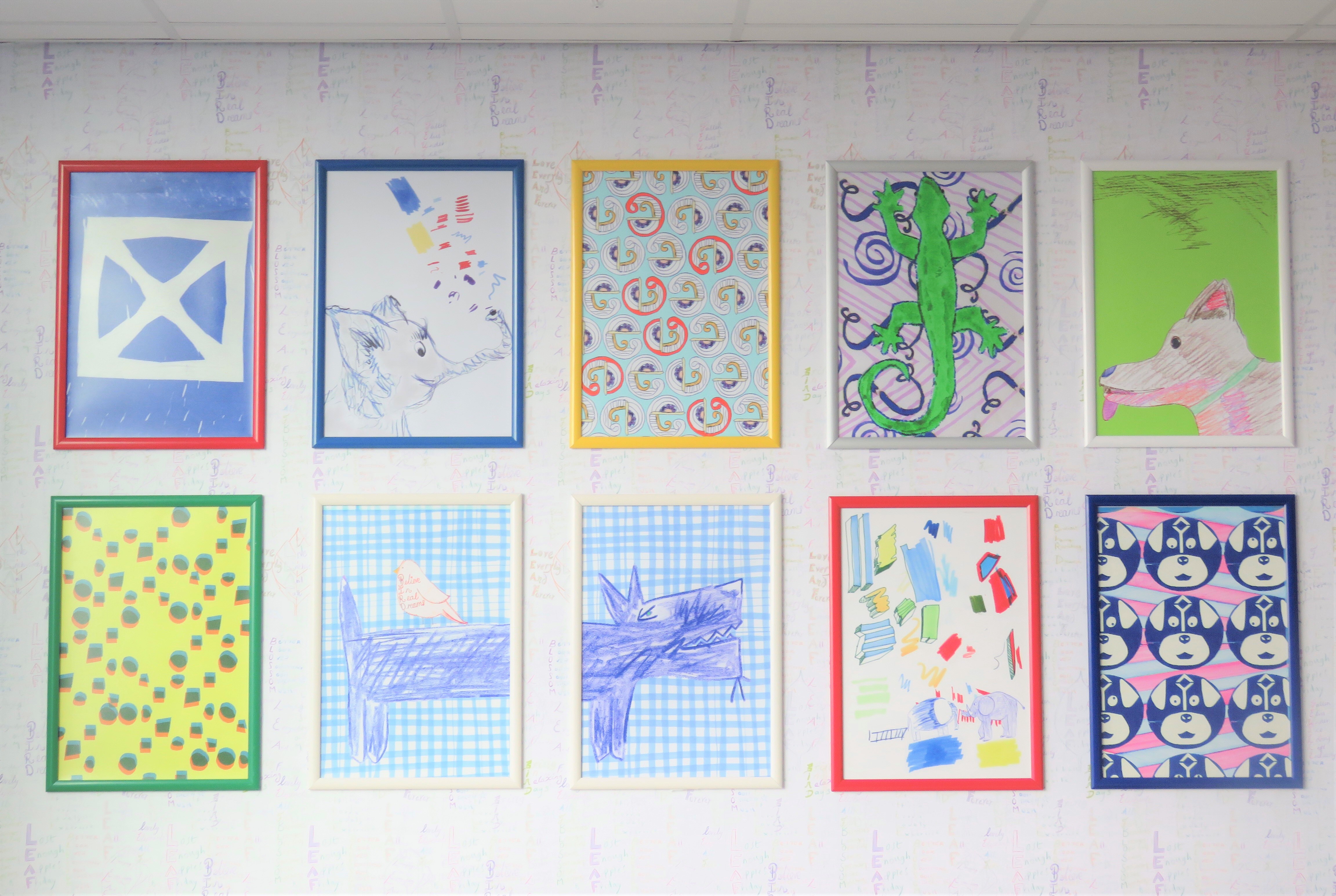Environment
We use artwork to transform and enhance our centres to create welcoming spaces to benefit the health and wellbeing of our patients, families, staff and visitors. Displaying stimulating and uplifting artwork in both the public and clinical areas of our centres offers a wealth of benefits including promoting recovery, staff wellbeing and a positive visitor experience.
Find out about some of the artwork on display at our Clatterbridge Cancer Centre sites below.
Tree Levels, Rachael Howard, 2020
Location: Across all levels, Clatterbridge Cancer Centre - Liverpool
Taking the textures and shapes of trees, especially their fruits, nuts and blossoms, Rachael has made distinctive tree motifs relating to the colours of each floor level at the hospital, and to trees' symbolism and connection with health and wellbeing. Rachael began with the strong and dependable oak tree, focusing on its fruit of the acorn as a motif for the entrance level of the centre.
Rachael enjoys mixing pigment dyes and painting with the squeegee to achieve a mix of colours and textures across a design - this technique has been described as ‘rainbow squeegee’ painting. The motifs for Clatterbridge Cancer Centre - Liverpool began as small-scale stencil screen-printed artworks, with the size of the designs increased to suit their locations. The mix of colours and gestural marks are enhanced in the larger scale. It is the large scale zoomed-in marks and the vibrancy of the colour mixes in these designs that Rachael finds most exciting.
Rachael Howard is a North West based textile designer, artist and lecturer. Rachael was one of the first Royal College of Art postgraduate students of Embroidery, and since then has pioneered a mix of screen printing and embroidery techniques. She has exhibited nationally and internationally and is a Senior Lecturer in Textile Design at Bath School of Design.
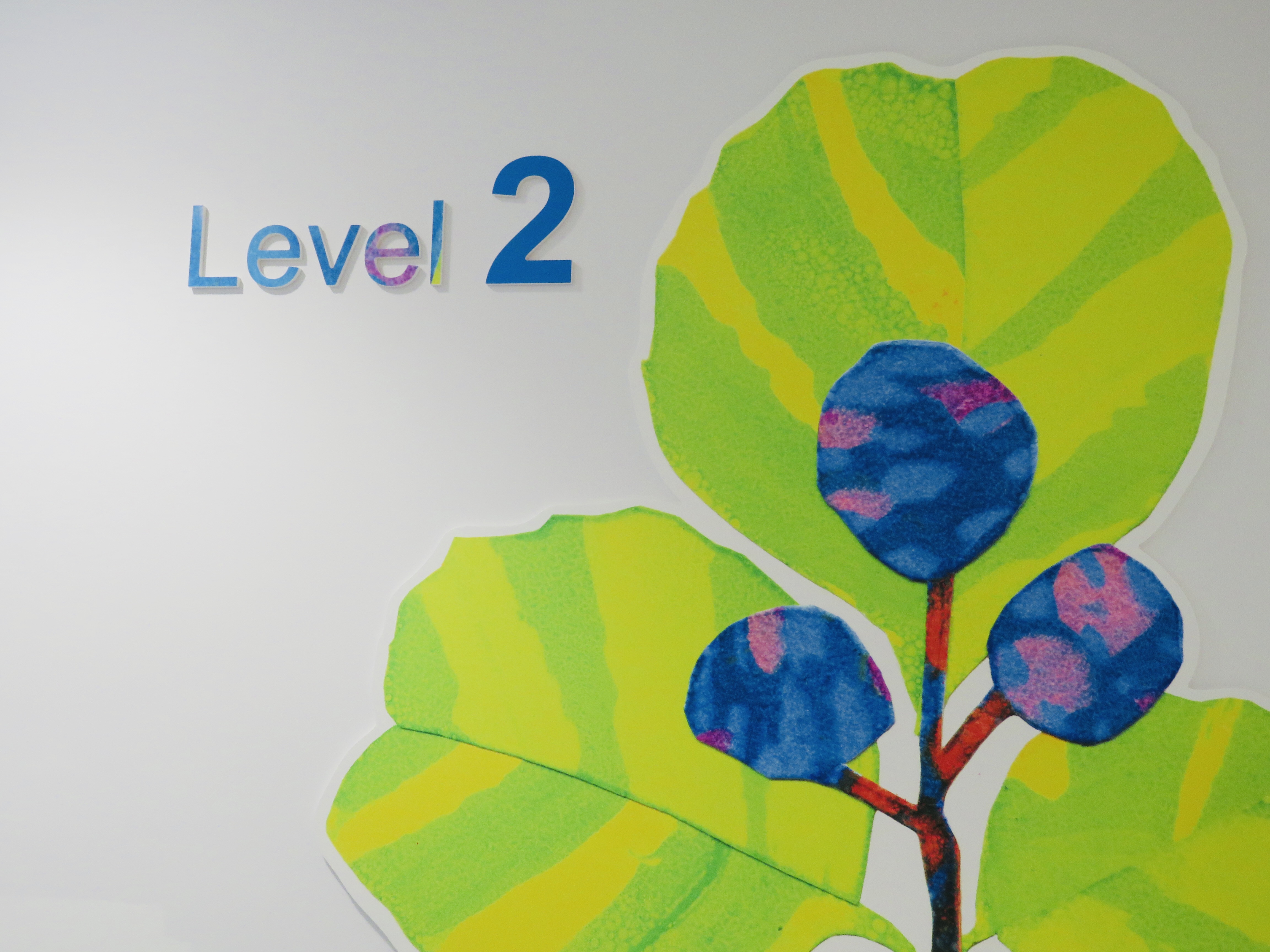
Primavera, Emma Rogers, 2020
Location: Winter Gardens, Level M3, Clatterbridge Cancer Centre – Liverpool
This piece denotes the season of early spring and the inspiration for the sculpture is from a phrase “After the winter must come the spring”. Emma thinks this describes all life and nature simply but beautifully - growth, renewal, hope, love. This also links to the Winter Gardens where it is sited.
The tree artwork is hand sculpted and fabricated from stainless steel, patinated with highlights of gold leaf. The tree trunk and branches are stainless steel and the leaves are hand cut sheet brass. The leaves are layered and cut individually to give the impression of light breaking through them on a sunny day. From afar they appear to be leaves on the tree, however they are actually silhouettes of doves that become a flock of birds flying through the Winter Gardens. The flock of birds will grow as more doves are added.
North West based sculptor, Emma Rodgers, has exhibited worldwide, featured in a documentary dedicated to her work on the Sky Arts Channel and has worked with Marvel films. Emma’s work is held in several major collections, including work at the Walker Art Gallery. Emma is an Honorary Fellow at Liverpool John Moores University and is an Ambassador for The Clatterbridge Cancer Centre.
If you would like to support our Charity, you can sponsor one of our doves. The doves are available in a variety of sizes and prices, and can be personalised with a message of your choice. Personalisation will be carried out by the artist before being added to the sculpture. Please contact the Clatterbridge Cancer Charity team on 0151 556 5566 or via fundraising@clatterbridgecc.nhs.uk.
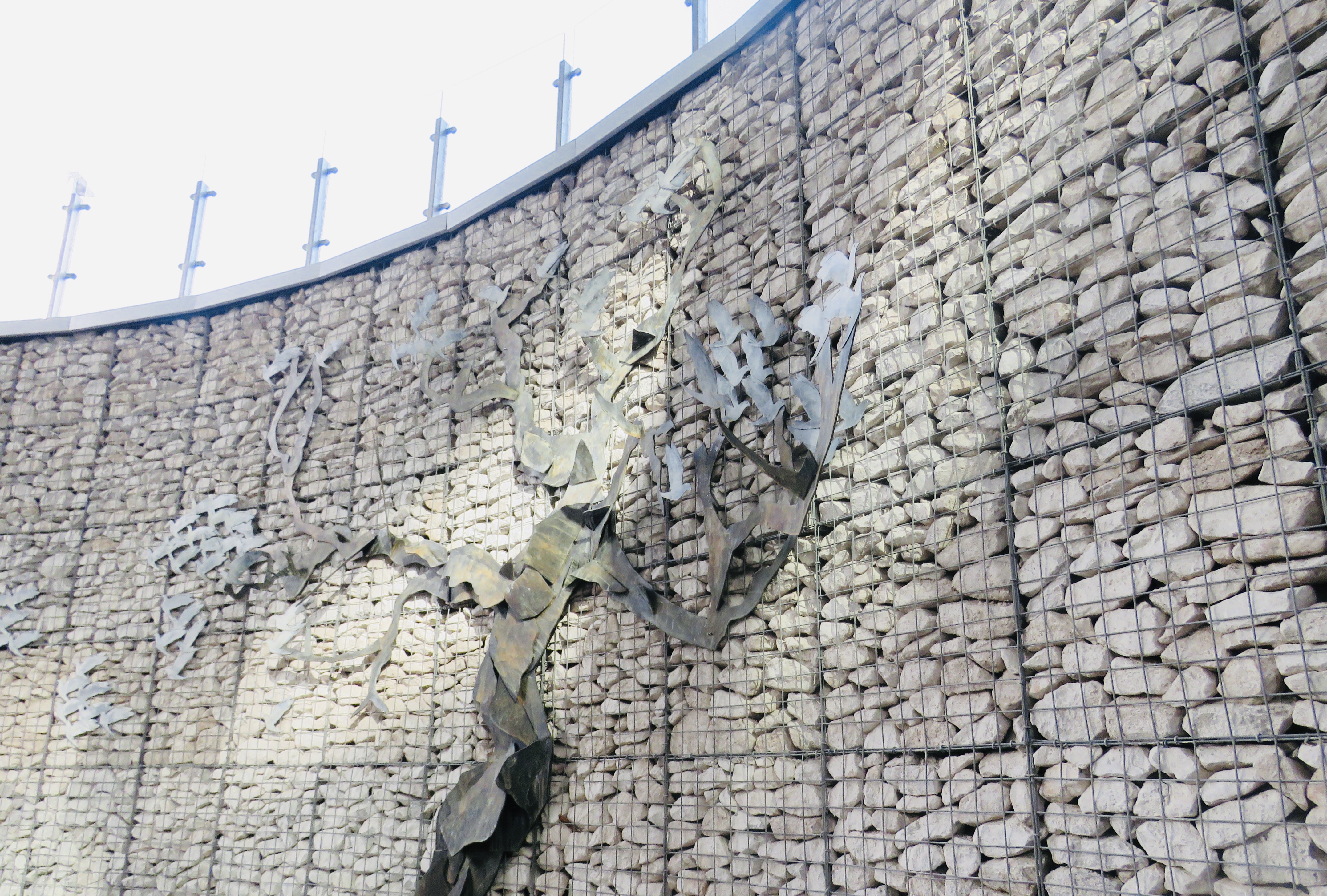
Our Melody Unwound, Liz West, 2020
Location: Level M1, Clatterbridge Cancer Centre – Liverpool
This work is a site-specific response to its location, creating a new space within the building for exploration and discovery. It depicts and symbolises a physical and metaphorical meeting point of both colours and people within the space. Covering a section of the walls, this immersive installation helps join together the different paths across the space. The visually rich multicoloured stripes collectively become a mesmerising mass when viewed from all angles, which appears to change and morph as you move around the space. The work encourages your eye to follow the work around the space on a visual journey with different perspectives offering intriguing colourways and kaleidoscopic visuals.
Liz’s new and original work forms part of her ongoing series of spatial light works, based on personal research into wellbeing, human colour perception and light fields. Liz likes to provoke a heightened sensory awareness in the viewer by exploring how sensory phenomena can invoke psychological and physical responses that tap into our own deeply entrenched relationships to colour. The work is inspired by Liz’s knowledge of and empathy for the experience of cancer patients, as well as the building’s architecture and interior design. Derived from nature, the colour palette aims to encourage positive associations, memories, and experiences of colour. Liz hopes that this luminous and considered mix of vibrant colours encourages a sense of wellbeing and brings joy to you.
Liz West's work encompasses site-specific installations, sculpture, and wall-based artwork. She is a graduate of Glasgow School of Art and lives and works in the North West of England. Liz’s work has been commissioned and has been part of exhibitions worldwide. Permanent works are sited in London, Liverpool, Manchester, Salford and Bury.
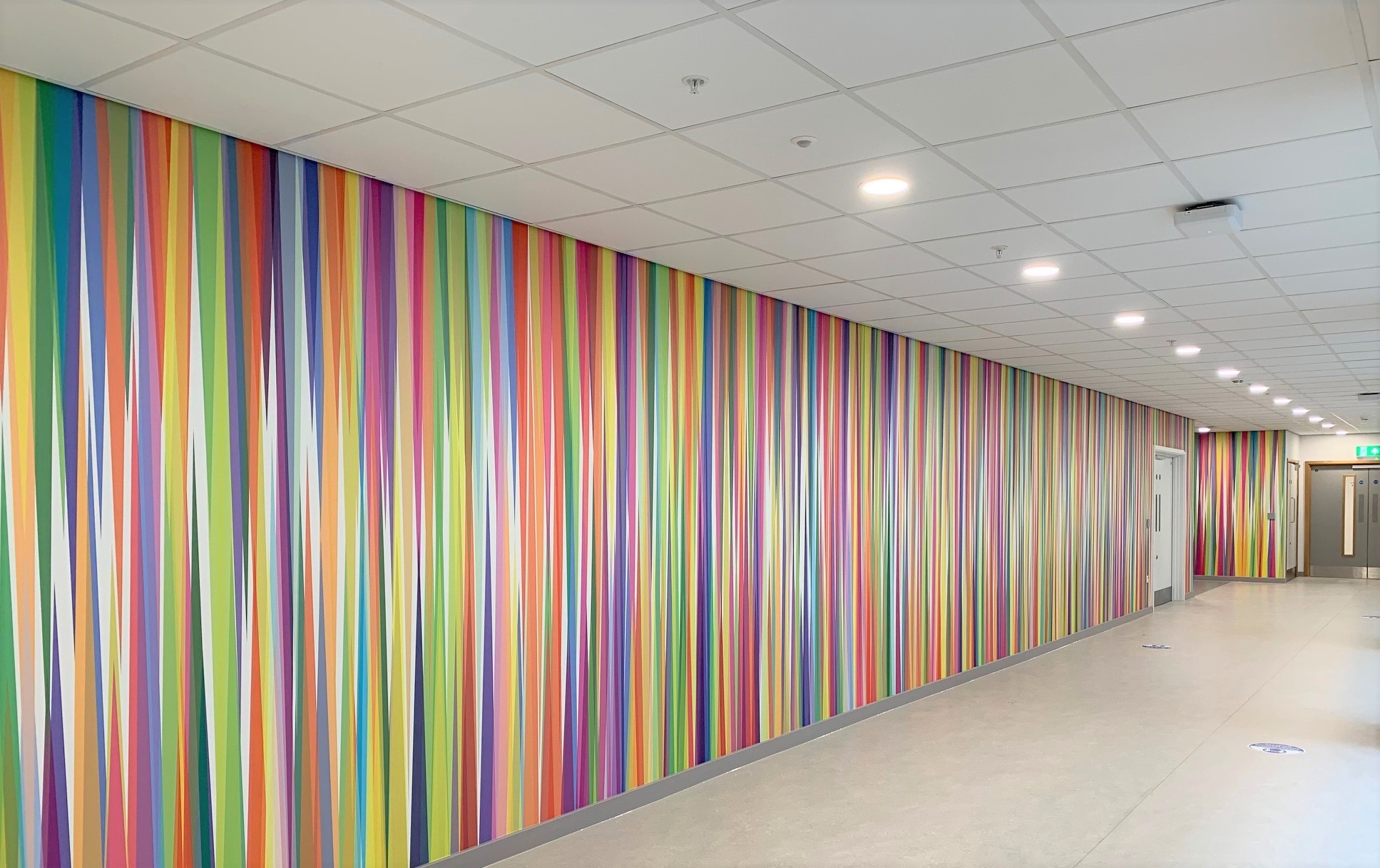
Lift, Leo Fitzmaurice, 2020
Location: Level M1, Clatterbridge Cancer Centre – Liverpool
Leo’s recent work has taken language as its focus, and in particular, the way words are presented in the public spaces we visit. Leo was inspired by the light and architecture of the atrium space of the hospital and the wayfinding that denotes each level with a different shade or colour. This experience of light, space and colour are things that visitors and patients alike naturally respond to, so Leo’s approach was to free these elements from their everyday duties, as it were, giving people the opportunity to enjoy their environment in a new and uplifting way.
Leo’s wish was to harness the essence of these observations to produce a piece that complimented the atrium space, giving it a sense of playful animation with the end result being both physical and light, and open to interpretation.
Leo Fitzmaurice lives and works in the North West. Leo was the recipient of the Northern Art Prize in 2011. You can see Leo’s work in the collections of Manchester Art Gallery, The Royal London Hospital, Locus+ Archive, and numerous private collections.
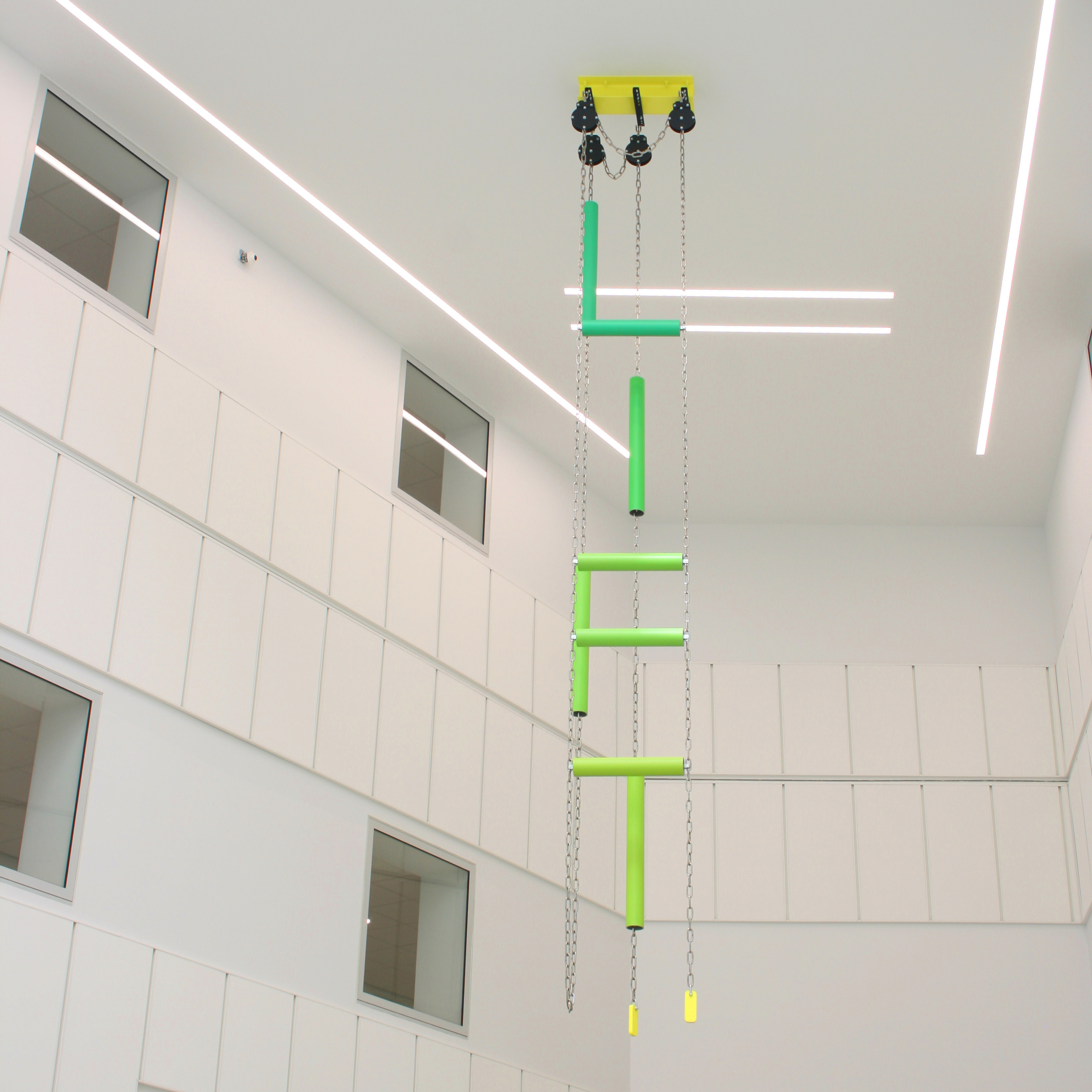
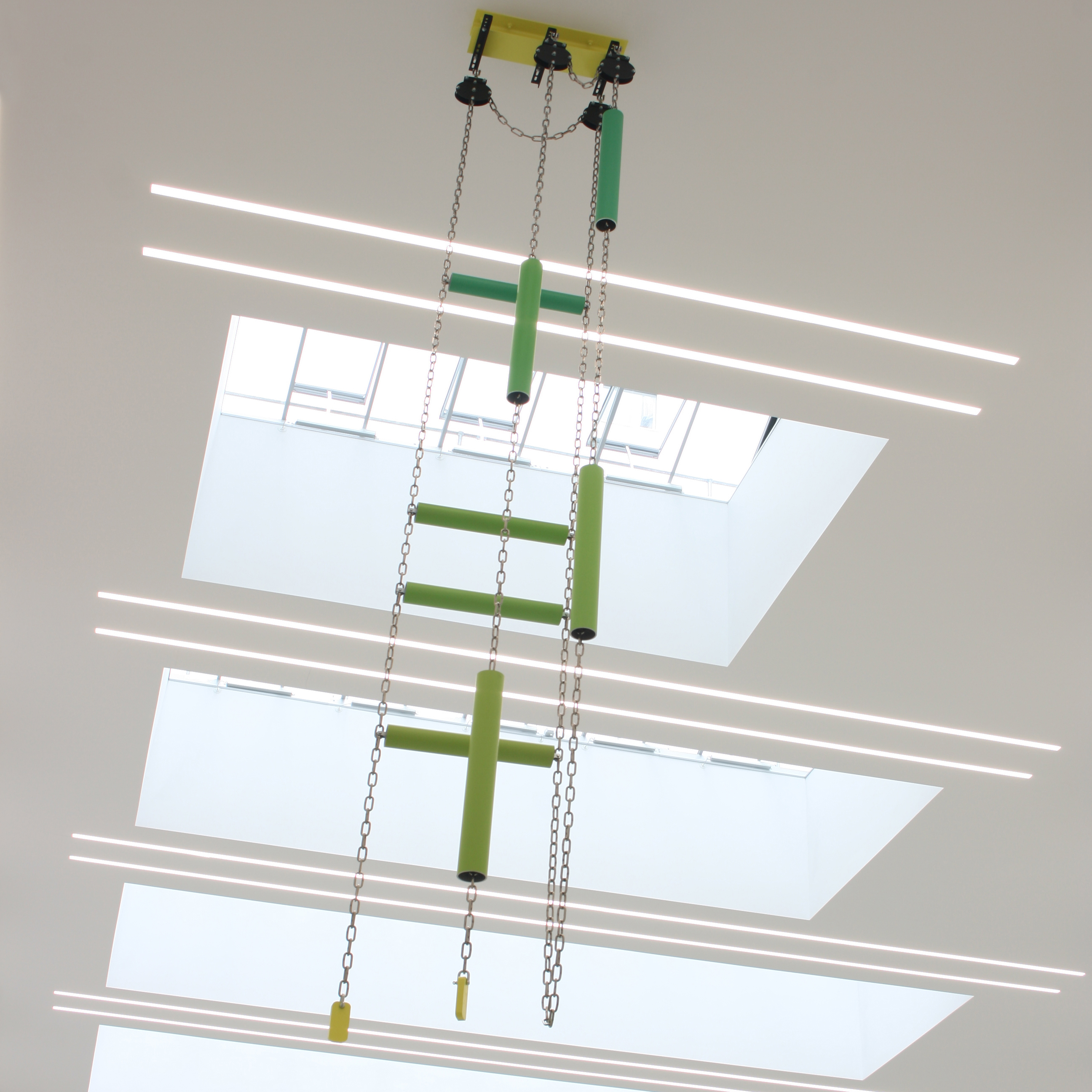
Timeline, Professor Sun Myint, 2020 (Created in collaboration with Emma Rodgers and Gillian Kirby)
Location: Level 0, Clatterbridge Cancer Centre – Liverpool
Timeline is a fascinating artwork that reminds us of the events which took place along the journey of The Clatterbridge Cancer Centre NHS Foundation Trust, from its inception as the first cancer hospital in Liverpool city centre in the early 1860s, to present day. Professor Sun Myint has been working for the Trust for the past 40 years and has seen many big changes and events in that time, some of which are included in the artwork.
One of the most intriguing panels featured on Timeline focusses on a small, blue medicine bottle found on the Liverpool site when the contractors were digging the foundations for the new hospital.
Professor Sun Myint has been painting for over 50 years in Myanmar, where he is originally from. He is a well-established artist and has exhibited regularly locally, nationally and internationally since 1964.
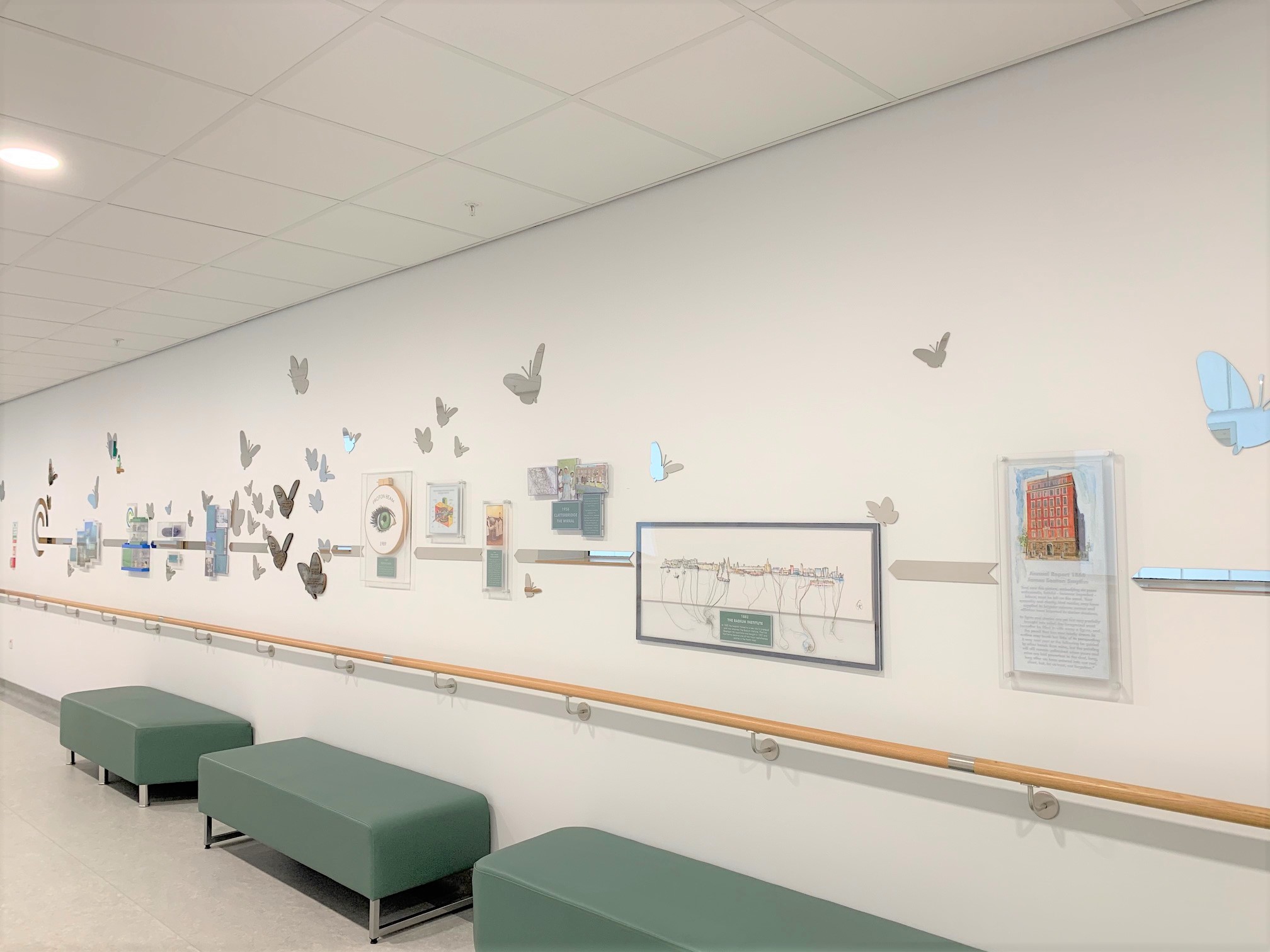
Blossom, Site Material Object (Lin Holland, Jane Poulton, Stephen Heaton), 2020
Location: Level 4, Clatterbridge Cancer Centre – Liverpool
The multi-disciplinary installation Blossom was made site-specifically for the Reflective Space at Clatterbridge Cancer Centre - Liverpool.
It includes: a film-collage of biophilic* elements; a soundtrack based on patterns, sounds and structures found in nature; a suite of seven colour photographs and a window screen that diffuses and casts light, providing a sense of privacy whilst remaining connected to the outside world.
Filming for the work began in spring, when the blossom trees were in full bloom and continued throughout the months as the new Liverpool hospital was being built.
Blossom celebrates the universal, transformative power of nature through the changing qualities of light as it appears in the natural world. From reflections on a river to sunlight filtering through a petal or blazing like fire at the tide’s edge, the film explores the elusive ‘moments of wonder’ that inspire quiet contemplation.
*Biophilic design increases the viewer’s connection to the natural world through images of nature, the use of light, the organisation of space and their collective compositional relationships.
Site Material Object is the collaborative partnership title of Lin Holland and Jane Poulton. Lin and Jane worked with photographer and film-maker, Stephen Heaton, on the making of Blossom. All have exhibited nationally and internationally and have work in public and private collections around the world.
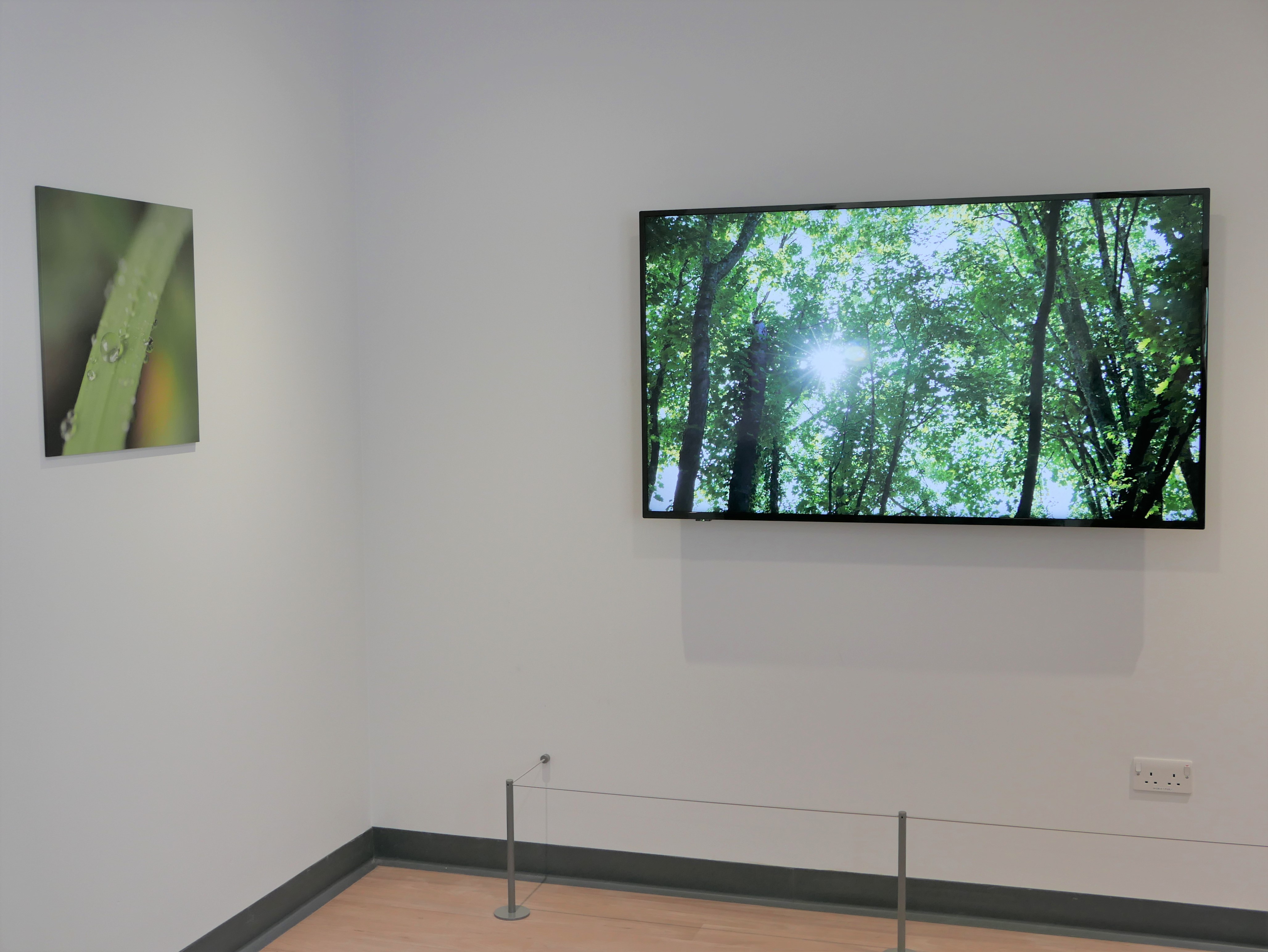
Our Space, created by patients,
families and staff with artist Rachael Howard, 2020
Location: Teenage and Young Adult Social Space, Level 5, Clatterbridge Cancer Centre – Liverpool
Staff, patients and parents of patients created a variety of artwork through a series of workshops delivered by Rachael at the Teenage and Young Adults lunch club over a number of weeks. Participants had a go at techniques like stencil screen printing and carbon printing, both low-tech approaches that could be happily delivered in the small but cosy lunch club room. They also took part in a fun poetry workshop with renowned poet John Hegley, who Rachael invited to be part of the workshops to add a handwritten element to the design outcomes.
Their work has been developed into designs for the Teenage and Young Adult social space. The wallpaper is a result of tree-themed acrostic poems made with John Hegley, which forms a backdrop to a variety of artworks made by patients in the workshops, some of which have been digitally reworked into repeat patterns, creating a series of wonderfully varied and lively posters.
The intention is that the social space is populated with artwork created by patients and that artworks may be refreshed and ever changing, following workshops delivered by artists.
Rachael Howard is a North West based textile designer, artist and lecturer. Rachael was one of the first Royal College of Art postgraduate students of Embroidery, and since then has pioneered a mix of screen printing and embroidery techniques. She has exhibited nationally and internationally and is a Senior Lecturer in Textile Design at Bath School of Design.
